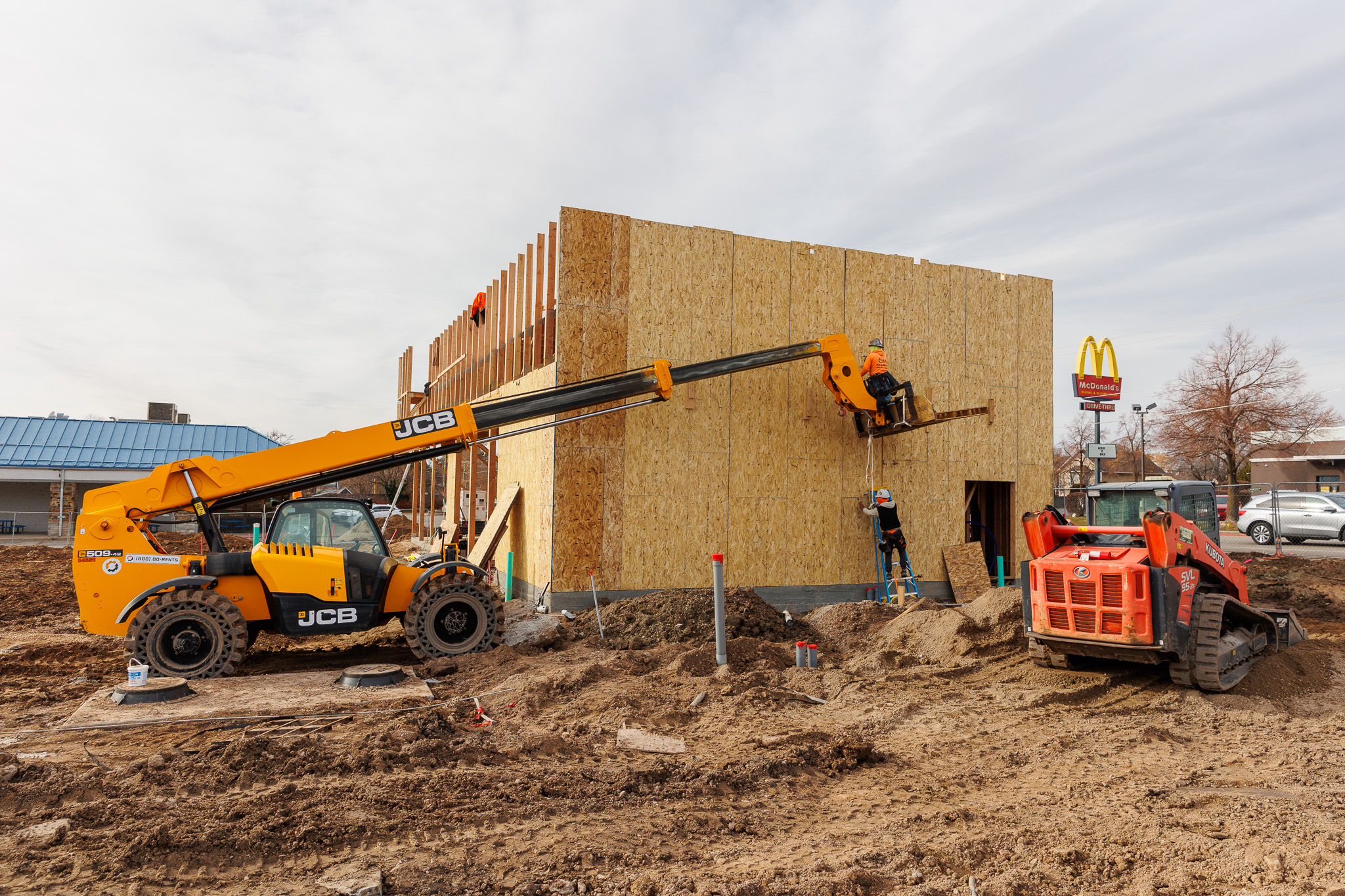The construction industry has always evolved to keep pace with the changing needs of society. New materials and innovations, economic factors, and workforce trends all play a part in shaping the construction industry.
In Utah, the economy is strong and infrastructure demands—roads and commercial development—persist, but we are seeing a shift in focus from multifamily and large office construction projects to more commercial and government-funded construction. Like everywhere else, there are challenges in the Utah market— availability and cost of materials, and workforce or labor shortages, to name the most prevalent. But the market is strong and companies that are willing to adapt to current conditions will thrive.
Here are the top six trends we are seeing in commercial construction this year and into the near future:
- Supply chain issues continue and are impacting profits.
Procuring the materials needed for construction projects continues to be a challenge. Construction firms are having difficulty finding certain materials, and, when they are able to get them, the cost is astronomical. For example, steel is scarce and quite expensive and aluminum prices are soaring.
This trend is putting increased pressure on the bottom line, as many companies are cutting profit margins to stay competitive. So, while construction revenue may be increasing, net profits are decreasing.
These supply chain and profitability issues are forcing many companies to change their processes. Many companies are ordering construction supplies far earlier than they did before—often before pre-construction tasks are complete and sometimes before they even win a bid for a job.
- Construction companies are getting involved earlier in the planning process.
The era of “design-bid-build” is quickly giving way to “design assist.” Construction companies are getting more involved in the planning process with architects and owners in order to streamline the process and eliminate the need for rework once construction begins.
In addition, construction companies expect owners to be more involved in the process. When owners are engaged with the project team, they have a better understanding of costs and availability of materials so they can align their expectations to their budgets. In addition, when owners are partners and are more involved in the project, they have a better insight into the impact of late-stage changes on budgets and timelines.
- Technology is changing the way we work.
The construction industry, like most others, is incorporating advanced technologies to streamline processes and improve accuracy and safety. Digital tools such as Building Information Modeling (BIM) software and drones with advanced camera technology are revolutionizing the way we plan our projects and operate on a daily basis.
Other disruptive technologies like artificial intelligence (AI), augmented reality (AR), and virtual reality (VR) are also changing the construction industry. While AR and VR are starting to play significant roles in visualizing projects during the planning stages and in safely training team members to operate equipment, AI is being used to optimize planning and construction processes and to improve productivity and safety.
For example, AI can be used to track tools, materials, and equipment, check the quality of work, and ensure that completed work is compliant with planning models.
Finally, robotics are starting to play larger roles in construction, performing repetitive, time-consuming tasks such as measuring and marking plans or layouts.
All these technologies bring higher efficiency, precision, and safety in addition to helping close the gap created by the workforce shortage.
- The demand for “smart” construction requires increased knowledge of technology and advanced materials.
Technology is also impacting the complexity of construction projects now and in the future. With the growing popularity of smart buildings and connected cities, which integrate the Internet of Things (IoT) to collect data and automate daily tasks, construction companies must start incorporating these technology advancements into their repertoires. For instance, construction companies need to know the ins and outs of installing things like wi-fi-enabled lighting in smart buildings and smart traffic lights in smart cities.
- The use of prefabrication is increasing.
Contractors and architects are turning to prefabrication and modular construction to help keep costs in check, reduce waste, and shorten construction timelines. Manufacturing and/or assembling certain components of a building in the shop, away from the job site, then transporting and affixing them to the structure saves time and money.
Experts believe that the use of prefabricated construction components will continue to grow rapidly in the coming years.
- The demand for sustainable, “green” buildings continues to grow.
Environmental issues dominate the news these days and governments and regulatory agencies around the world are increasingly demanding the use of green building practices to lessen greenhouse emissions and improve energy efficiency. Construction companies must incorporate environmentally sustainable designs and green building methods to meet heightened standards aimed at reducing the impact to the surrounding environment.
Despite an array of challenges, the outlook is good for the construction industry. While economic trends and new digital tools may necessitate changes to the way we do things, there will always be a need to build the infrastructure that fuels our lives.
Need a Design-Build Contractor for your next commercial project? Contact Maddox today!






